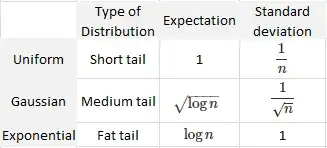You can obtain upper bound by applying Talagrand inequality : look at Chatterjee's book (Superconcentration phenomenon for instance) .
It tells you that ${\rm Var}(f)\leq C\sum_{i=1}^n\frac{\|\partial_if\|_2^2}{1+\log( \|\partial_i f||_2/\|\partial_i f\|_1)}$.
For the maximum, you get $\partial_if=1_{X_i=max}$, then by integrating with respect to the Gaussian measure on $\mathbb{R}^n$ you get
$\|\partial_if\|_2^2=\|\partial_if\|_1=\frac{1}{n}$ by symmetry. (Here I choose all my rv iid with variance one).
This the true order of the variance : since you have some upper bound on the expectation of the maximum, this article of Eldan-Ding Zhai (On Multiple peaks and moderate deviation of Gaussian supremum) tells you that
${\rm Var}(\max X_i)\geq C/(1+\mathbb{E}[\max X_i])^2$
It is also possible to obtain sharp concentration inequality reflecting these bound on the variance : you can look at http://www.wisdom.weizmann.ac.il/mathusers/gideon/papers/ranDv.pdf
or, for more general gaussian process, at my paper
https://perso.math.univ-toulouse.fr/ktanguy/files/2012/04/Article-3-brouillon.pdf
In full generality it is rather hard to find the right order of magnitude of the variance of a Gaussien supremum since the tools from concentration theory are always suboptimal for the maximum function.
Why do you need these kinds of estimates if I may ask ?
